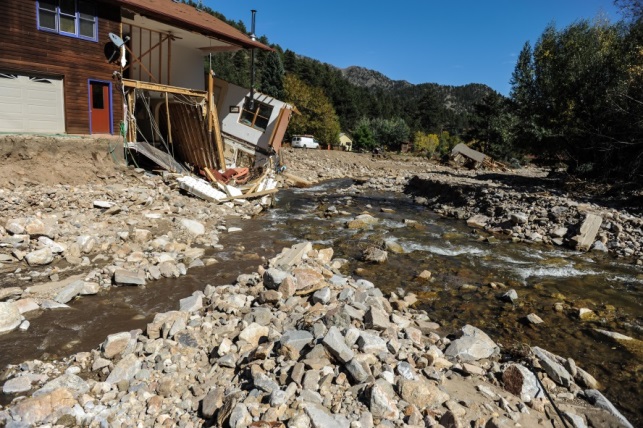Table of Contents

A post-disaster moratorium on repairing or rebuilding structures temporarily restricts building activity following a major disaster. Communities have the authority to implement such restrictions post-event. The authorization to enact a moratorium can also be found within a comprehensive recovery ordinance that is adopted prior to a hazard event. Such ordinances typically establish the framework for a variety of post-disaster tasks, such as debris management, stabilization of damaged buildings, identification of other life/safety risks, repair of damaged infrastructure, and mitigation options and funding to rebuild to different standards or to potentially relocate certain uses (Boyd, Hokanson, Johnson, Schwab, & Topping, 2014). A sample model ordinance can be found on the APA website (see additional resources below).
 The moratorium may include provisions to address critical issues regarding rebuilding that will be faced by communities in a post-disaster environment. Such provisions should:
The moratorium may include provisions to address critical issues regarding rebuilding that will be faced by communities in a post-disaster environment. Such provisions should:
- Establish restrictions for repairing and rebuilding structures that are based on damage thresholds.
- Distinguish between permits needed (and associated procedures) for rebuilding and repairing vs. permits for new development.
- Allow the community more time to assess conditions in more severely damaged areas.
Post-disaster moratoria on repairing or rebuilding structures are generally implemented through ordinances adopted by local governments. They can be adopted after a disaster; however, the best practice is to adopt before a disaster occurs and include triggers that will indicate when the procedures will need to go into place and how long the moratorium should last.
Following the 2013 floods, Jamestown implemented a moratorium on rebuilding and all new permits. The intent of this temporary moratorium was to allow the Town more time to evaluate the physical impacts the flood had on the Town, and to help inform where and under what conditions rebuilding could occur. This temporary suspension of permitting also allowed the Town Board more time to study and consider any necessary changes to the Town’s construction and development policies. The moratorium was in place for four months from September 25, 2013, until January 21, 2014 (Flood Recovery Information, 2016).
The Town also created a Rebuilding and Restoration Guide (2014) that served as a valuable resource to its citizens following the disaster. The guide provided answers to citizens on all elements related to rebuilding.
Boulder County has integrated procedures for establishing a post-disaster rebuilding moratorium into its Land Use Code. The Code contains an entire section titled “Procedures Following Disasters.”
Evans issued an emergency ordinance (Ord. 571-13) that imposed a building and development moratorium after the 2013 floods. The moratorium applied to the special flood hazard area and any additional areas flooded during the September floods, for a period of six months.
The benefits of enacting a post-disaster moratorium include:
- Allowing a community to pause or slow down the permitting and rebuilding process to help ensure appropriate post-disaster rebuilding (and determining what is appropriate ahead of any disaster event).
- Ensuring that community goals for recovery and redevelopment are being met.
- Allowing for necessary mitigation, code changes, and/or policy changes to be fully evaluated and/or implemented before rebuilding takes place.
Despite the many benefits, key challenges associated with implementing a post-disaster moratorium on rebuilding and redevelopment are negotiating the political, economic, and developmental pressures associated with such an ordinance.
There will be pressures to rebuild as quickly possible following a major disaster in order to allow citizens to return to the community and to reestablish the economic vitality of the community. Anything seen as an impediment to a quick recovery will likely not be looked upon favorably by disaster victims and the community as a whole. It takes tremendous political will and clear messaging to community members to enact a post-disaster policy such as a moratorium on rebuilding.
